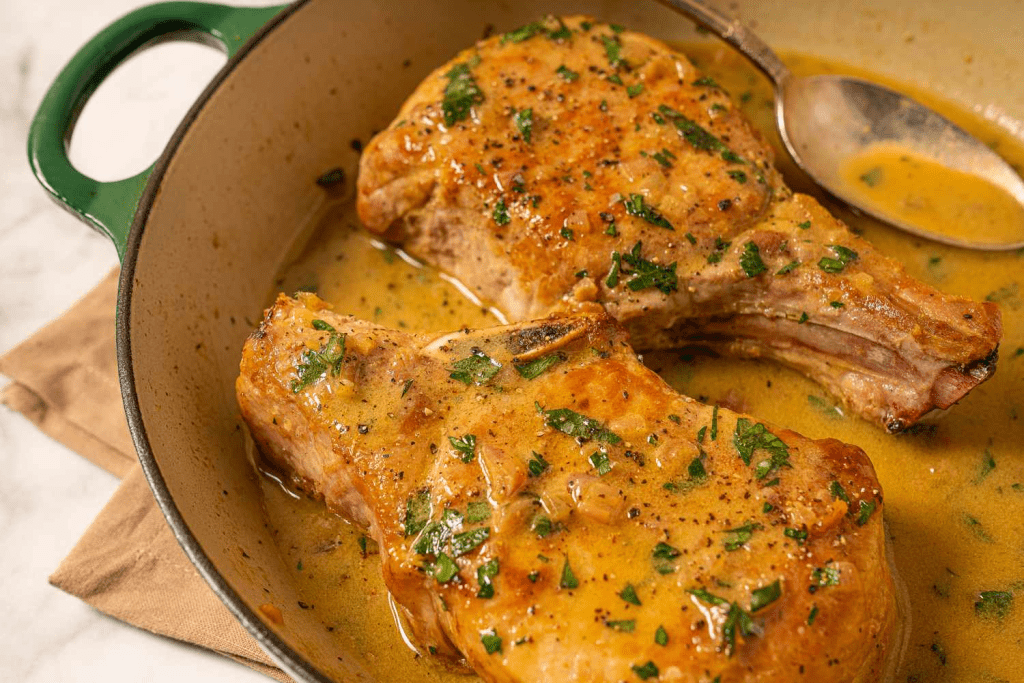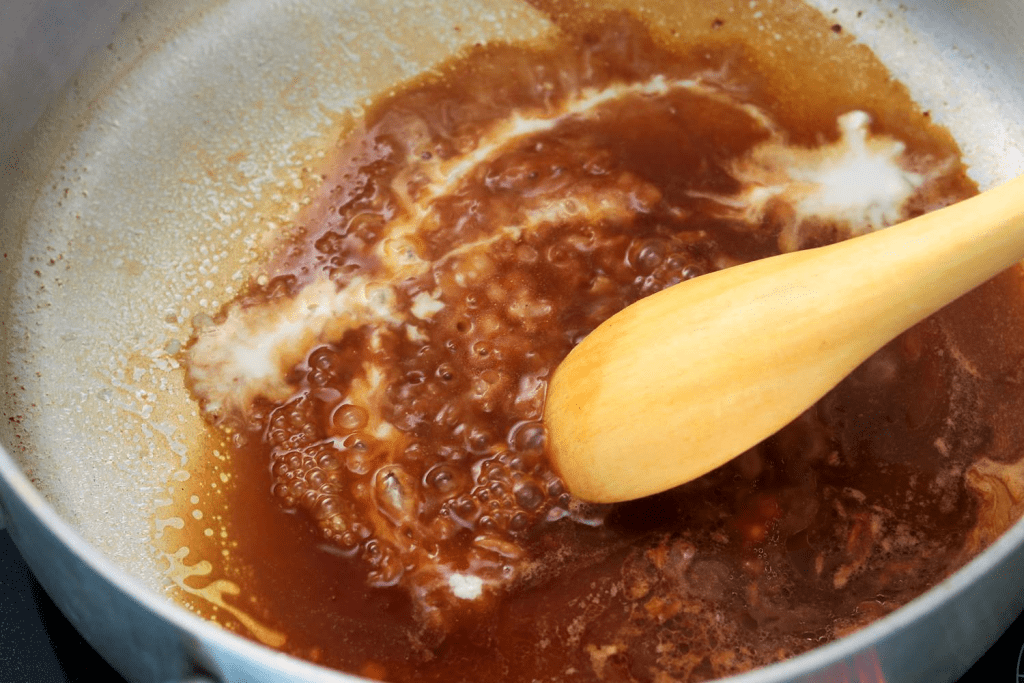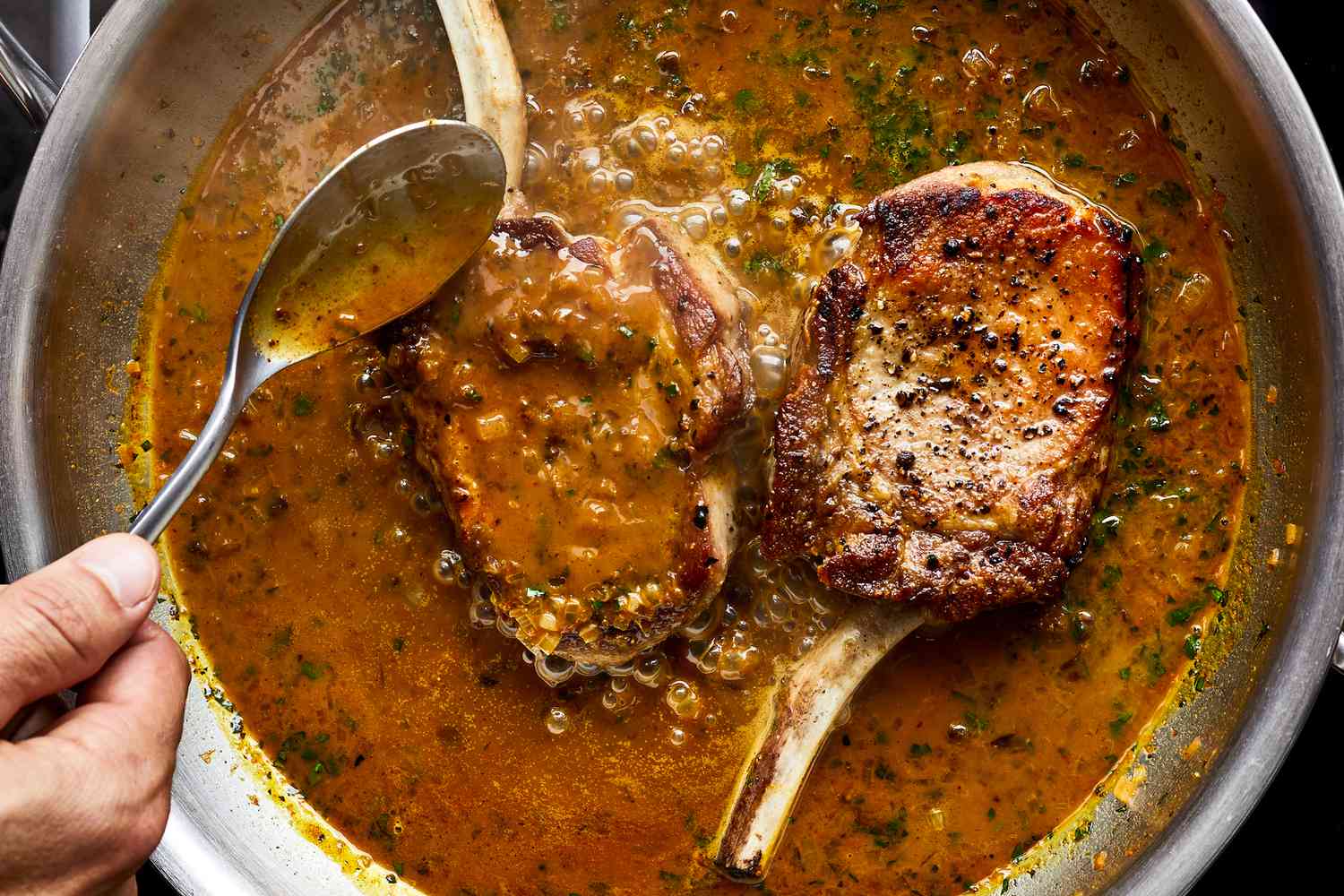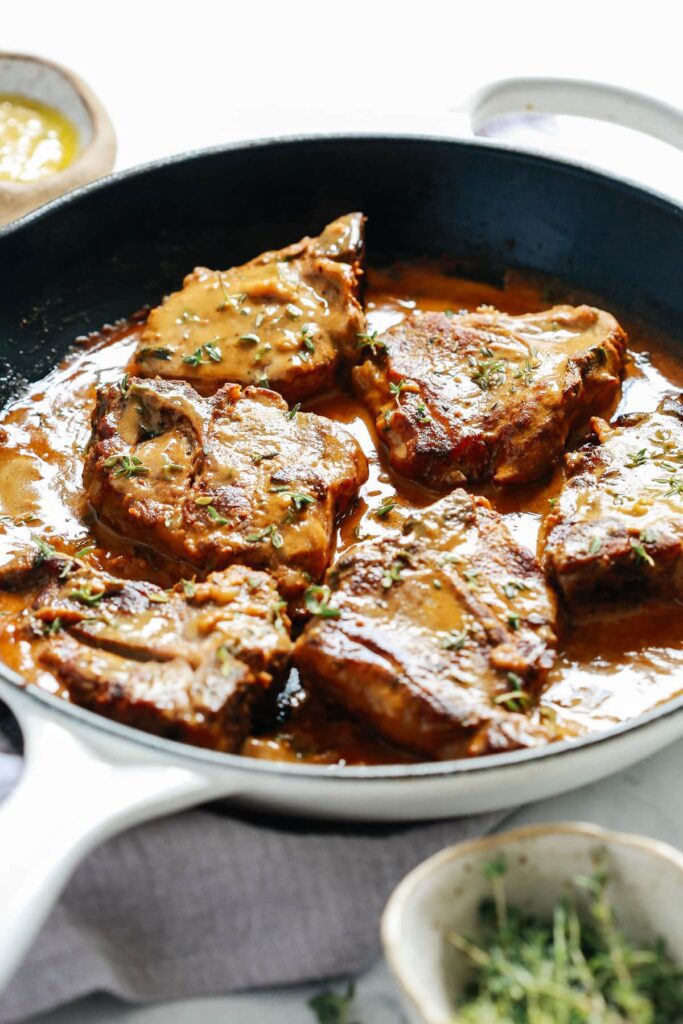The pan sauce is created from the concentrated tastes that remain upon cooking meats, vegetables, or fish at the bottom of a pan. Because they are very flavored and can be manipulated in various ways, such sauces form the foundation of many cuisines.
These sauces are not tasty but practical since they eliminate crusted material from cookware, making them easier to clean. Cooking items in a pan tends to caramelize, especially when prepared at high heat. As a result, the bottom of the pan has a deep, black crust.
However, you should know how you can make the pan sauce. Let’s get started on learning the best pan sauce recipe.
Steps for Making the Perfect Pan Sauce
Searing a delicious piece of beef serves two functions. The first step is, of course, to cook your protein.

On the other hand, pan sauce is one of the best culinary methods in your toolbox. The brown pieces (“fond”) and fluids left at the bottom of the pan are the foundation of a superb sauce. You can elevate your seared beef from ordinary to extraordinary:
Step 1- Sear Heat 1 Tablespoon of Oil in a Skillet
Once heated, add the meat and cook until done to your liking, flipping only once. Each turn allows the natural juices to escape, and you want to keep those tastes locked in.
Step 2- Add flavor
Remove the meat while maintaining the pan on medium heat. Add your preferred aromatics, ginger, onion, garlic, or herbs. If there isn’t fat remaining in the pan, a little butter or more oil can help.
Step 3- Deglaze
This is a fancy way to add extra liquid to help remove those lovely brown bits from the pan. Generally, acids like wine or vinegar work best, although stock can also be used.
How to Make Pan Sauce For Meat Dishes
Whipping up a pan sauce is one of my favorite culinary tricks to elevate a meat dish from ordinary to restaurant-quality in just minutes.
After searing a piece of meat, whether it’s a steak, chicken, or pork chop, I’m always left with those delightful browned bits, fond, at the bottom of the pan. These are gold!

By deglazing the pan with a splash of wine, broth, or even just water, I can lift those flavorful tidbits. Then, simmering with aromatic herbs or garlic, perhaps a splash of cream or a knob of butter, transforms it into a silky, delectable sauce.
Drizzled over the freshly cooked meat, this pan sauce not only captures every essence of flavor from the meat but also adds layers of its own, making every bite an unforgettable experience. Truly, the magic lies in the melding of simple ingredients and masterful technique.

How To Make an Easy Pan Sauce
Instructions
Clear the pan but do not clean it
- Transfer the cooked food to a different plate or tray once you’ve completed cooking the main course in your pan. Do not wash the pan. Remove a tablespoon of the pan’s residual cooking oil or rendered fat.
Sauté the Shallots (Optional)
- When mixed with the pan drippings, add enough oil to produce roughly one tablespoon of total fat. Set the pan over medium-high heat and sauté the shallots for 2 to 3 minutes or until softened and golden.

- Toss the red wine or other alcoholic beverage while the pan is on medium-high heat. (If you don’t want to use alcohol, you can substitute extra stock at this stage.) Scrap any crispy, browned pieces from the bottom of the pan with the spatula while the alcohol simmers.
Reduce the wine by approximately half
- Allow the wine or other alcohol to decrease by about 3 minutes. The pan should be just beginning to look dry. It’s not an exact science, so don’t worry; move on to the next stage before the pan dries.
The liquid is about 1/2 cup
- After 3 to 5 minutes, reduce the liquid in the pan to about 1/2 cup. Tilt the pan now and again to see how much liquid has evaporated, and you’re done when it’s reduced by roughly half. Furthermore, you don’t have to be exact; estimating is fine.
- Reduce to medium-low heat and mix in the butter or cream. Gently whisk until the butter is completely melted.
Whisk in the cornstarch (optional)
- Whisk for a more decadent, creamier sauce. Mix the cornstarch with two tablespoons of water first to prevent clumps. Allow the sauce to thicken for a few more seconds.
- If your liquid evaporates too much or the sauce gets too thick, whisk in a little additional stock to achieve a thinner, more pourable consistency.
Fill a measuring cup or a serving dish halfway with the sauce
- Transfer the sauce to a measuring cup or serving dish for easy pouring—taste and season with salt and pepper to taste.
- Pan sauces are at their finest when used immediately. Drizzle it over your dinner or serve it to your guests with a spoon.
Notes
FAQs
What can I use to deglaze the pan?
You can use any liquid, but wine, broth, or stock are the most common choices. Just make sure to choose a drink that complements the flavors of the meat you’re cooking.
What kind of pan should I use to make a pan sauce?
You can use any pan to cook the meat if it is oven-safe and can withstand high heat. A stainless steel or cast iron pan works well.
How do I make a pan sauce?
After cooking your meat, remove it from the pan and set it aside to rest. Pour any excess fat from the pan, leaving behind the browned bits. Place the pan over medium heat and add your chosen liquid (wine, broth, or stock).
Use a wooden spoon or spatula to scrape up the browned bits from the bottom of the pan. Simmer the liquid until it is reduced by about half. Remove the pan from the heat and swirl in a pat of butter or a splash of cream (optional) to thicken and enrich the sauce.
Can I make a pan sauce ahead of time?
Yes, you can make a pan sauce ahead of time and reheat it later. Store it in an airtight container in the fridge for 3-4 days. Reheat it gently over low heat, constantly stirring, until it reaches your desired temperature.
What can I serve with a pan sauce?
Pan sauces go well with various slices of meat, such as steak, chicken, pork, or fish. You can also use them to dress up vegetables or pasta dishes.
Final Thoughts
Making a pan sauce is a simple but delicious way to elevate your cooking game. You can create a flavorful sauce that perfectly complements your meat or vegetables with just a few essential ingredients and simple techniques. With the tips outlined above, you are on your way to creating restaurant-quality pan sauces in no time.

